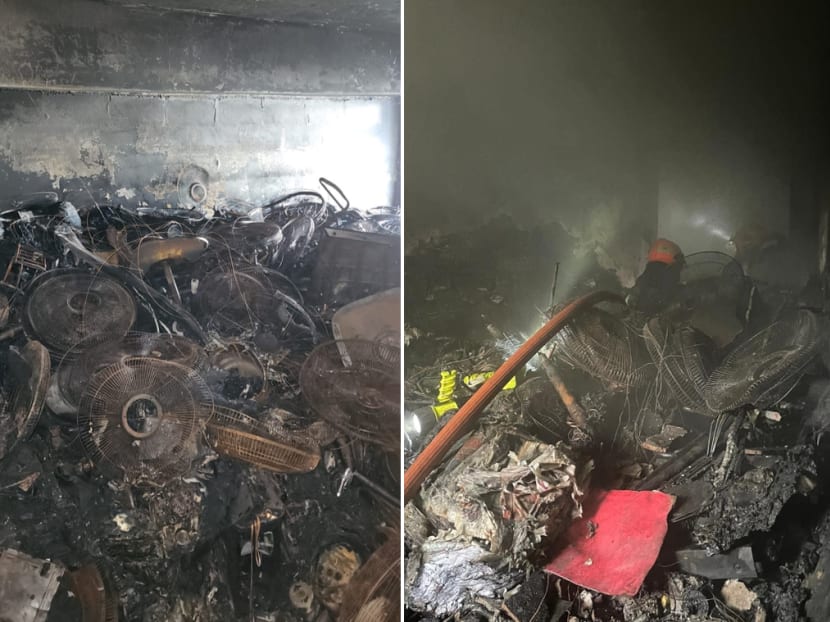SCDF to assess measures to prevent re-ignited fires after Jurong East flat went up in flames twice in 2 days
SINGAPORE — The Singapore Civil Defence Force (SCDF) will assess if more measures are needed to prevent re-ignition, after a Jurong East flat went up in flames again on Aug 17, a day after a fire there was extinguished.

The aftermath of a fire in the master bedroom of a flat (left) in Jurong East on Aug 17, 2022. A day earlier, the scene at the living room of the same flat (right).
SINGAPORE — The Singapore Civil Defence Force (SCDF) will assess if more measures are needed to prevent re-ignition, after a Jurong East flat went up in flames again on Aug 17, a day after a fire there was extinguished.
One resident was killed in the first blaze on Aug 16 at Block 236 Jurong East Street 21. It took firefighters around five hours to fully put out the fire.
They also carried out an operation to "damp down" the flat, which is a process of wetting burnt surfaces to prevent an extinguished fire from rekindling because of hot surfaces.
A day later, another fire broke out in the master bedroom of the same flat despite the measures taken.
In response to media queries, SCDF said in a statement on Monday (Aug 22) that rekindled fires are "uncommon".
“Notwithstanding this, the firefighting and damping down operation for this incident was very challenging as the entire unit contained a large volume of debris that was closely packed together from wall to wall.”
As part of its post-fire incident review, SCDF will assess whether more measures are needed for similar fire incidents in the future, while preserving the scene as intact as possible for fire investigation.
The safety of residents is of paramount importance, it added.
There were 480 residential fires in both private and public homes in the first six months of this year, which is lower than the 513 residential fires in the same period last year.
NO SIGN OF SMOKE OR FIRE
Giving an overview of its response to the initial fire, SCDF said that an extensive "damping down" operation was carried out in the Jurong East unit after the blaze was put out. The operation lasted for around eight hours.
The duration of the damping down operation was assessed to be necessary and there was a need to preserve the scene for an investigation into the blaze.
As part of the damping down operation, firefighters deployed thermal imaging cameras to locate heat spots and guide firefighters to target their water jets at the affected areas.
To avoid causing more damage that could affect the investigation, they avoided the excessive use of water, SCDF said.
The firefighters ended their operations at around 5pm that day, after the thermal imaging cameras showed that the temperature of the debris had reached normal ambient temperature levels and no heat spots were detected.
Later, SCDF investigators left the scene at around 8pm and there was no sign of smoke or fire at the time.
Then, at around 5am on the next day, SCDF was alerted to a fire at the same unit, and found a "small localised fire" in the master bedroom that was quickly extinguished by firefighters using a water jet.
“The cause of the fire was likely due to deep-seated embers that were not detected by the thermal-imaging cameras,” it said, adding that it has since worked closely with the town council to remove the debris from the flat.











